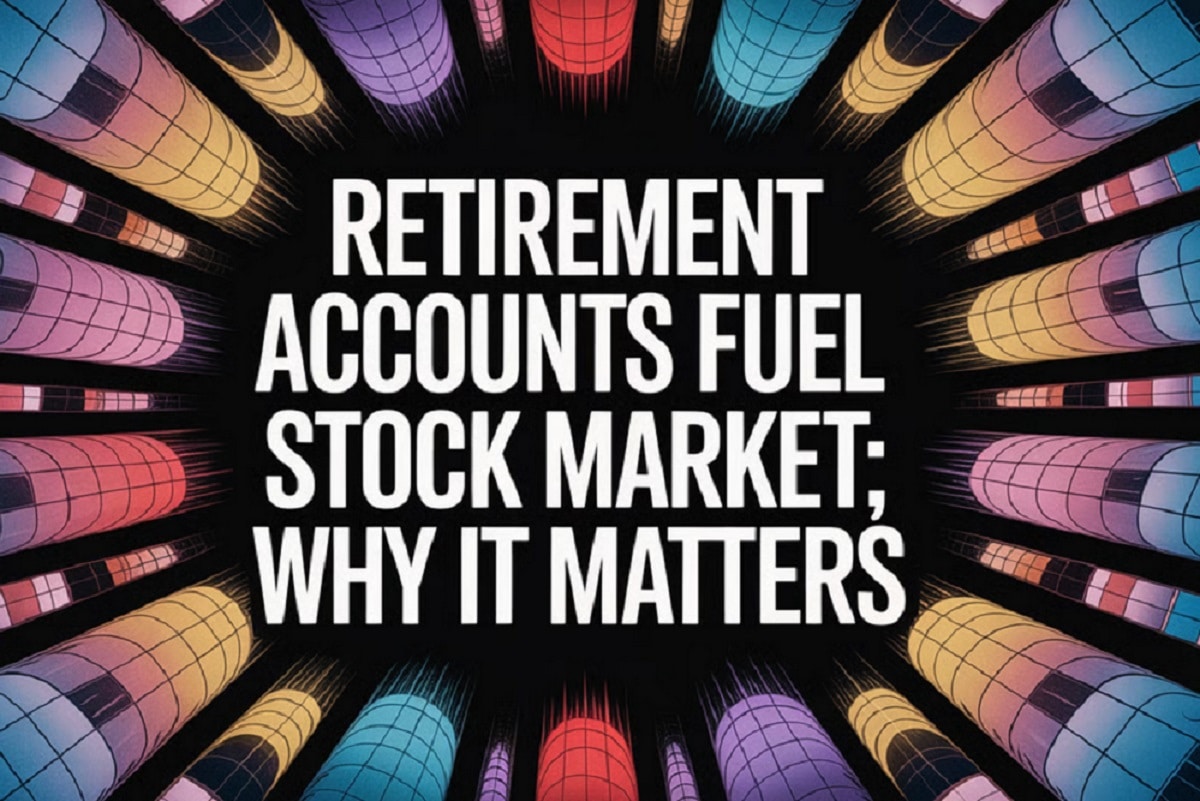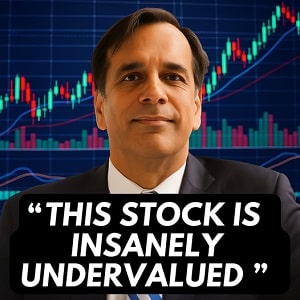Retirement accounts Fuel Stock Market: Why It Matters is a topic of growing significance as millions of Americans rely on these accounts to secure their financial futures. With trillions of dollars in assets, retirement accounts like 401(k)s and IRAs have become major players in the U.S. stock market, influencing its performance and stability. This relationship affects not only individual investors but also the broader economy, making it essential to understand how retirement savings shape market trends.
For decades, retirement accounts have steadily funneled money into stocks, creating a symbiotic relationship between savers and the market. As more people contribute to these accounts, the demand for equities rises, driving market growth. Recognizing this dynamic helps investors make informed decisions about their portfolios while shedding light on the larger economic picture. Let’s explore how retirement accounts fuel the stock market and why this matters for everyone involved.
How Retirement Accounts Drive Demand in the Stock Market
A significant portion of retirement account assets is allocated to stocks, which creates consistent demand for equities. Many retirement plans, including 401(k)s and IRAs, are designed to prioritize long-term growth, often directing contributions into stock-heavy portfolios. This steady flow of capital helps sustain the stock market, even during periods of volatility. Younger investors, in particular, are increasingly embracing aggressive stock allocations, confident in the potential for higher returns over time.
Recent trends show that younger generations are taking advantage of tax-advantaged accounts to invest heavily in the stock market. This generational shift not only boosts market participation but also reinforces the idea that retirement accounts play a pivotal role in shaping market dynamics. Understanding this trend highlights the importance of aligning investment strategies with long-term goals, especially for those just starting their financial journeys.
The Scale of Retirement Assets in the U.S.
The sheer size of U.S. retirement assets underscores their influence on the stock market. Trillions of dollars are held in retirement accounts, with a substantial portion invested in equities. These investments provide a steady stream of capital that supports businesses, fuels innovation, and drives economic growth. The scale of these assets makes them a cornerstone of the financial system, impacting everything from individual wealth-building to corporate financing.
Breaking down the allocation of these assets reveals that stocks dominate retirement portfolios, reflecting the confidence investors place in equities for long-term growth. This preference for stocks over other asset classes amplifies their role in the market, ensuring that retirement accounts remain a key driver of demand. As the value of these accounts continues to grow, so does their impact on the stock market and the broader economy.
Key Benefits for Individual Investors
Investing retirement savings in stocks offers significant advantages, particularly when it comes to achieving long-term financial goals. Historically, equities have outperformed other asset classes, providing investors with the potential for higher returns. This growth is crucial for building a robust nest egg, especially given the compounding effect that allows investments to grow exponentially over time.
By allocating a portion of their retirement funds to stocks, investors can harness the power of compounding to maximize their savings. This strategy not only helps individuals prepare for retirement but also positions them to weather short-term market fluctuations. As we’ll see, however, balancing growth potential with risk management is essential for long-term success.
Potential Risks: Market Volatility and Sequence of Returns
While stocks offer attractive growth opportunities, they also come with risks, particularly for retirees who may be more vulnerable to market downturns. One of the most significant dangers is sequence of returns risk, where poor market performance early in retirement can deplete savings faster than expected. This risk underscores the importance of careful planning and diversification to protect against adverse market conditions.
Market volatility poses another challenge, as sudden declines can erode portfolio values and impact withdrawal strategies. For retirees relying on their investments for income, such downturns can create financial strain and force difficult decisions. Understanding these risks is critical for anyone managing a stock-heavy retirement portfolio, as it highlights the need for a balanced approach to investing.
Younger Investors and Aggressive Stock Allocations
Younger investors are increasingly adopting aggressive stock allocations within their retirement accounts, driven by a focus on long-term growth. This trend reflects confidence in the stock market’s ability to deliver strong returns over time, as well as a willingness to take on higher levels of risk. While this approach can yield significant benefits, it also carries the potential for losses if markets turn volatile, emphasizing the importance of strategic planning.
The TINA Effect: Why Retirement Accounts Favor Stocks
The “There Is No Alternative” (TINA) phenomenon explains why retirement accounts continue to favor stocks despite market cycles. With interest rates on bonds and other traditional investments remaining low, equities often appear as the most viable option for achieving meaningful growth. This lack of compelling alternatives pushes investors to allocate more of their retirement savings to stocks, reinforcing the market’s reliance on these accounts.
Even during periods of uncertainty, the TINA effect persists, as investors seek ways to outpace inflation and grow their wealth. This dynamic highlights the ongoing tension between risk and reward, as well as the challenges of finding suitable investment options outside of the stock market. Understanding this phenomenon sheds light on why retirement accounts remain a driving force behind market demand.
Impact on Broader Market Stability and Growth
The constant flow of contributions from retirement accounts provides a stabilizing influence on the stock market, supporting its resilience and upward trajectory. This steady influx of capital helps buffer against short-term volatility, creating a foundation for sustained growth. By funneling money into equities, retirement savers contribute to the overall health of the market, benefiting both individual investors and the broader economy.
This symbiotic relationship underscores the interconnectedness of retirement savings and market performance. As more people participate in retirement plans, the market gains additional support, fostering an environment conducive to innovation and economic expansion. Recognizing this link highlights the importance of policies that encourage retirement saving and market participation.
How Market Trends Affect Retirement Account Performance
Broad market trends, such as bull and bear runs, directly influence the performance of retirement accounts. During bull markets, rising stock prices boost account values, helping investors build wealth more quickly. Conversely, bear markets can lead to significant declines, testing the resolve of savers and requiring adjustments to investment strategies.
These trends have varying implications depending on an investor’s age and financial goals. Younger savers may benefit from market downturns by purchasing stocks at lower prices, while older investors face greater risks as they approach or enter retirement. Understanding how market cycles affect retirement accounts is crucial for navigating these fluctuations effectively.
The Role of Employer-Sponsored Retirement Plans
Employer-sponsored retirement plans like 401(k)s play a pivotal role in shaping investment behavior and driving market inflows. Features such as auto-enrollment and default investment options encourage higher participation rates and direct contributions toward stocks. These plans simplify the process of investing, making it easier for workers to build wealth while supporting the stock market’s growth.
Policy and Regulatory Considerations
Government policies and regulations significantly impact the flow of retirement funds into the stock market. Contribution limits, required minimum distributions, and tax incentives all influence how individuals save and invest for retirement. By shaping the rules governing retirement accounts, policymakers can either encourage or hinder market participation, affecting both individual outcomes and broader economic stability.
Comparing Retirement Accounts: 401(k)s vs. IRAs
While both 401(k)s and IRAs contribute to the stock market, they differ in terms of participation rates and investment allocations. 401(k)s often benefit from employer matching and automatic enrollment, leading to higher stock allocations among participants. IRAs, on the other hand, offer more flexibility but may attract different types of investors. Comparing these accounts provides valuable insights for optimizing retirement strategies.
Frequently Asked Questions
How much of U.S. retirement assets are invested in stocks?
A significant portion of U.S. retirement assets—often exceeding 50%—is invested in stocks, reflecting the widespread belief in equities’ long-term growth potential. This allocation underscores the central role of stocks in retirement planning and their impact on market demand.
Why do retirement accounts primarily invest in stocks?
Retirement accounts primarily invest in stocks due to their historical track record of delivering strong returns compared to other asset classes. Additionally, limited alternatives and the need for growth drive investors to prioritize equities, despite associated risks.
Are retirement accounts fueling market bubbles?
Some experts worry that the steady flow of retirement funds into stocks could contribute to market overvaluations. However, others argue that diversified portfolios and long-term investment horizons mitigate this risk, highlighting the complexity of the issue.
What are the main risks for retirees with stock-heavy portfolios?
Retirees with stock-heavy portfolios face risks such as sequence of returns risk, market volatility, and potential drawdowns. These factors can threaten financial security, especially if downturns occur early in retirement.
How do market downturns affect retirement savings?
Market downturns can reduce retirement account values, forcing savers to adjust withdrawal strategies or delay retirement. These impacts highlight the importance of diversification and contingency planning to safeguard against adverse conditions.
Conclusion
Retirement accounts are undeniably a driving force behind the U.S. stock market, shaping its growth and stability while offering individuals a pathway to financial security. Their influence extends beyond personal wealth-building to encompass broader economic benefits, underscoring the importance of understanding this relationship. As retirement savings continue to fuel market demand, staying informed about investment strategies becomes increasingly vital.
For investors, the key takeaway is to balance growth potential with risk management, ensuring that portfolios align with long-term goals. By reassessing your retirement strategy, diversifying investments, and staying educated about market dynamics, you can navigate this complex landscape effectively. Remember, your contributions not only shape your future but also play a crucial role in the health and vitality of the stock market.
Take the time to review your retirement plan, consult with a financial advisor if needed, and make adjustments to ensure your portfolio reflects your objectives. The connection between retirement accounts and the stock market is a powerful one—use it wisely to secure your financial future.


































